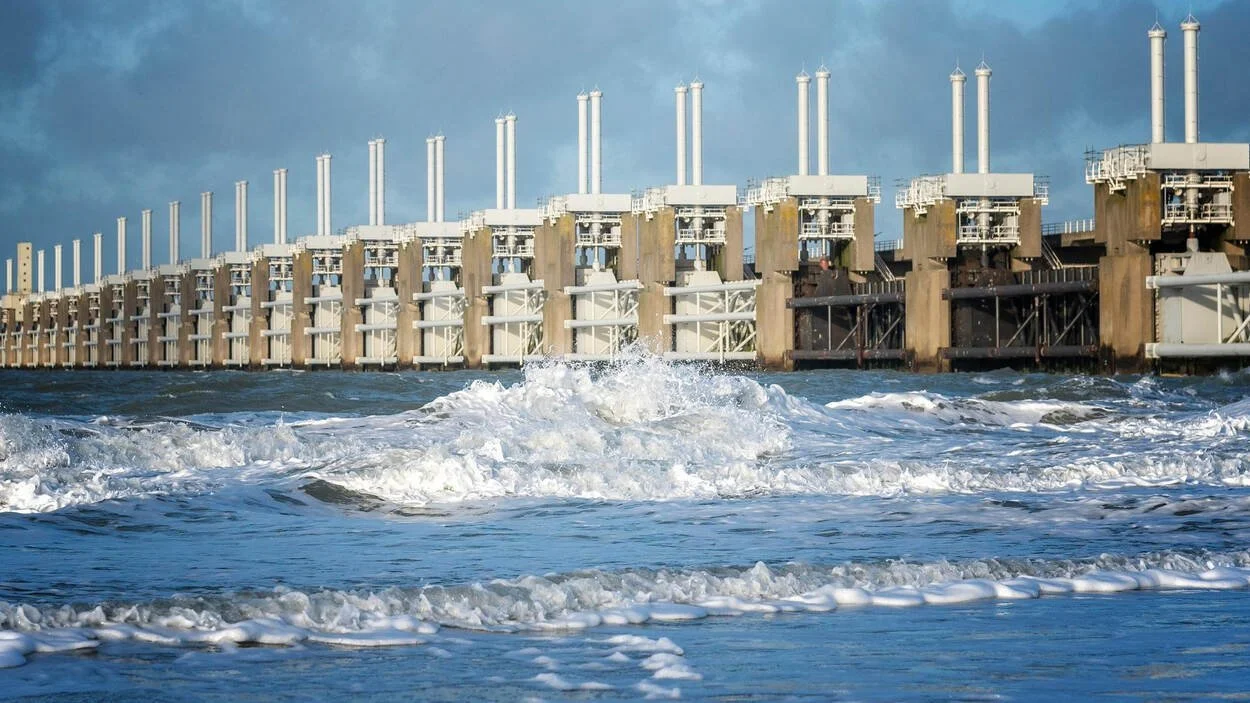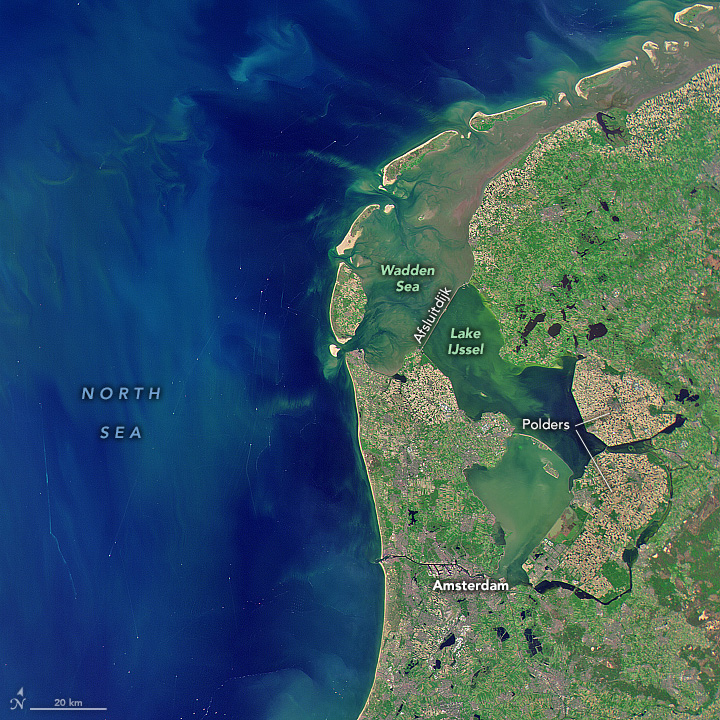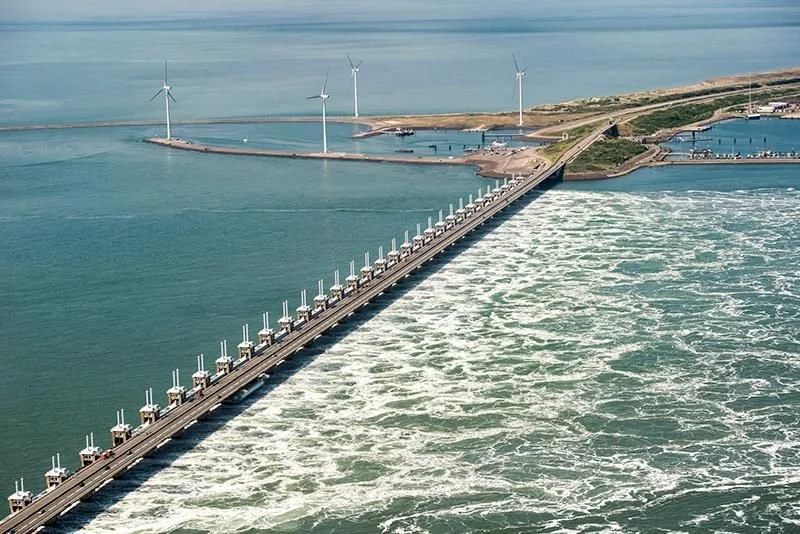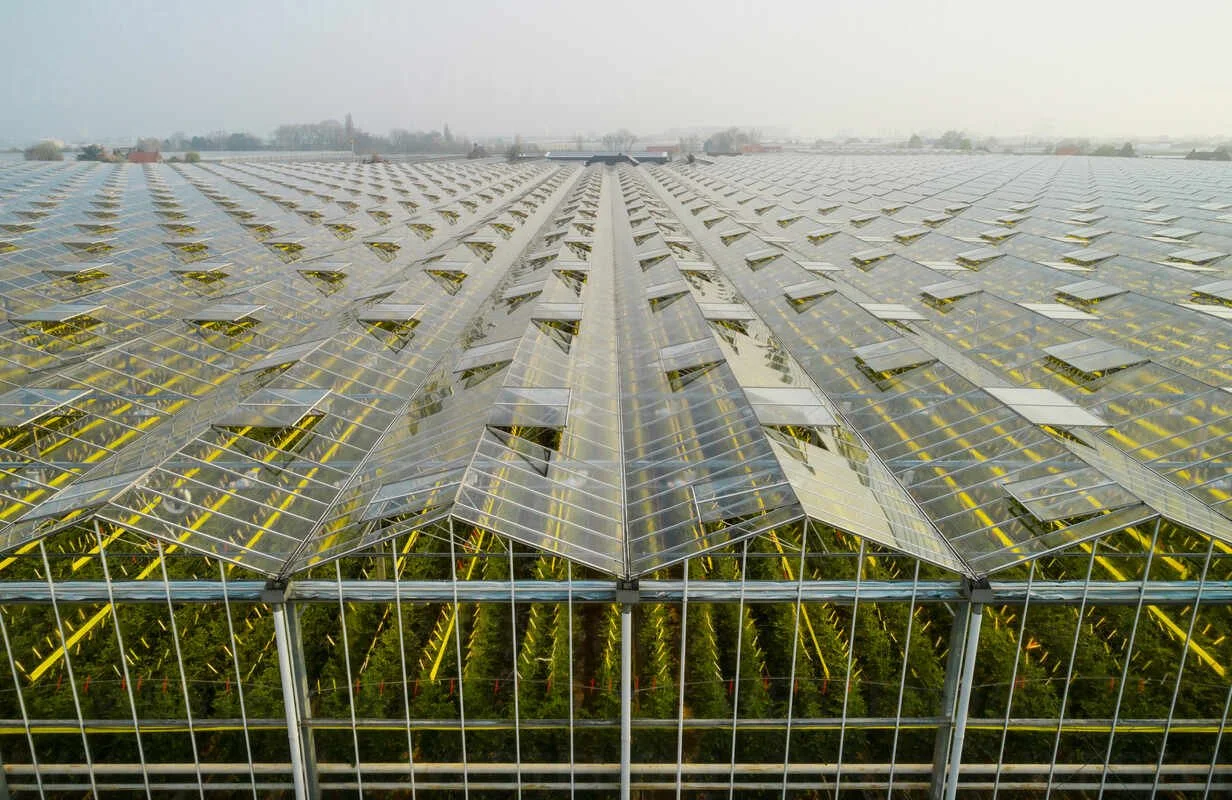The Netherlands: Defying the Sea
The Oosterscheldekering. Image: NCK
One of the countries I want to visit next is the Netherlands. The Dutch are known for their bicycles, a fondness of tulips and for building exquisite machines to keep Moore’s law going – but one of my favourite discoveries after living in the Netherlands for many years is the pragmatic audacity of how they built the country
The Netherlands would be much smaller but as they say “God created the world, and the Dutch created the Netherlands” – around 20% of the entire land area was claimed from the North Sea in a centuries-long process
You can clearly see the parcels of land claimed from the sea, called Polders, in the centre. Image: ESA / NASA
That means much of the country lies below sea level, exposed to flooding. In 1918, the Dutch decided on turning the Zuiderzee into land in a gigantic effort led by the politician Age Buma and the engineer Cornelis Lely. It’s the largest reclamation project and included building a 32km long dam that created the IJssel Lake and space to create new land parcels (Polders)
The Zuiderzee region today. Image: Wikimedia
After experiencing the deadly North Sea flood of 1953, the Dutch upgraded to the world’s most advanced water management infrastructure to protect themselves:
The Delta Works are the world’s largest water management system, made up of dams, dykes, sluices, locks, levees and some of the greatest storm surge barriers ever built. The American Society of Civil Engineering considers it one of the Seven Wonders of the Modern World
Below (and at the top of the article) is the 9km long Oosterscheldekering, the Eastern Scheldt Storm Surge Barrier. Construction started in 1976 and took a decade to complete. In 2015, five tidal turbines were added, generating 1.2 MW of power
The Oosterscheldekering. Image: Hollandluchtfoto/Getty Images
One of the most impressive parts of the Delta Works is the Maeslantkering Storm Surge Barrier protecting the Port of Rotterdam. It’s one of the largest movable structures in the world and controlled by an automated system monitoring water levels. It’s made up of two 210m long, floating arms that can be filled with water to form a solid barrier
The Maeslant storm surge barrier. Image: Netherlands Water Partnership
They don’t waste any of their new land – in the south, Dutch cities are growing into one big connected urban web spanning from Amsterdam to The Hague and Rotterdam.
I have mixed feelings about the Dutch tomato, but thanks to a hyper productive agricultural industry, the Netherlands are the world’s 2nd largest food producer after the U.S. despite being 270x smaller — and the largest exporter of flowers globally
Image: Alnix
I can’t think of another country in Europe that has built anything like this – and as sea levels are rising, Dutch ingenuity and engineering will be in high demand
This is not the only area where the Dutch are punching far above their weight. So much more to discover!





